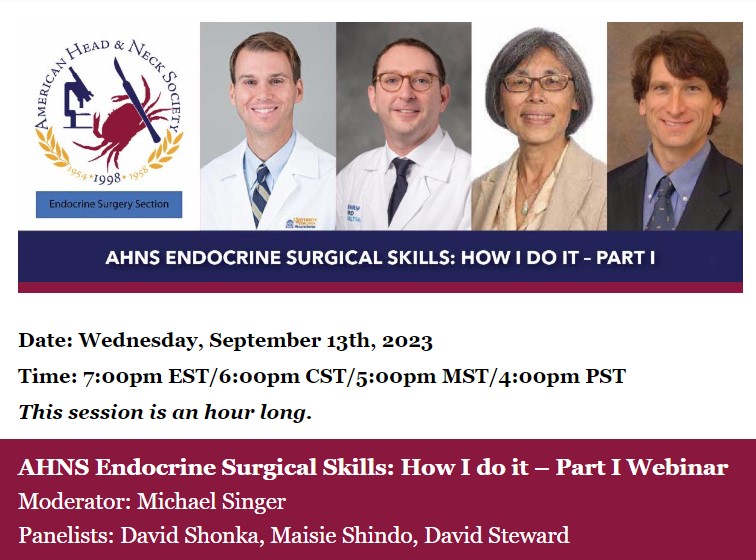(from the AHNS Cutaneous Cancer Section)
by Kush Panara, MD1 & Robert Brody, MD1
Department of Otorhinolaryngology, University of Pennsylvania, Philadelphia, PA
Intro
Malignancies of the external auditory canal (EAC) are relatively rare with an estimated yearly incidence of 1-6 cases per million population.1 This review will focus on the most common pathology, squamos cell carcinoma (SCC), which accounts for >90% of cases. However other pathologies include basal cell carcinoma, malignant melanoma, merkel cell carcinoma, adenoid cystic carcinoma, and lymphoma.2
Anatomy
The EAC is a part of the outer ear anatomy. It extends from the auditory meatus laterally and connects to the tympanic membrane medially, which separates the outer and middle ear. The canal is lined circumferentially with skin. The outer two-thirds of the canal is cartilaginous and the medial one-third is bony and arises from the tympanic portion of the temporal bone.
In the cartilaginous EAC, the Fissures of Santorini allow for cancer spread through dehiscences in the cartilage directly to the soft tissue inferiorly. In the bony EAC, tumors can spread sub-dermally along periosteum and through the foramen of Huschke, which is a dehiscence along the bone allowing extension into the TMJ and parotid.3,4
Diagnosis
Given the aggressive nature of neoplasms of the EAC, prompt diagnosis is paramount. Mortality rates for stage 1 and stage 2 disease are <10%. However, five-year survival drops dramatically to <50% for more advanced disease.5 Unfortunately, due to the difficult nature of diagnosing EAC malignancies, the mean time to diagnosis from onset of symptoms is over 2 years6 and 65% are diagnosed with T3 or T4 tumors.7
Neoplasms are very frequently misdiagnosed or missed (up to 40%) due to the overlap of symptoms with those of a chronically infected ear.8 The most common symptoms include including chronic drainage, otalgia, and hearing loss. A mass tends to be visible on otoscopy only in more advanced stages.9 Up to 80% of patients with EAC carcinoma have a history of otitis media.10
As opposed to the majority of malignancies arising from the outer ear, such as the pinna, sun exposure is not a risk factor for SCC of the EAC. However, clinicians should have a lower threshold for suspicion for malignancy in patients with history of radiation, chronic irritation, and exposure to inflammation.11 Atypical signs include non-responsiveness to typical anti-inflammatory and anti-infectious treatments, bloody otorrhea, or facial nerve weakness, which should prompt clinicians to biopsy suspecting lesions or perform an exam under anesthesia in the operating room.
Work up
There is no universally accepted staging system for EAC carcinoma, but the Pittsburg system is often the most cited.12 Work up for malignancy includes both CT scan to evaluate extent of bony erosion and MRI for the soft tissue and possible intracranial extension, however underestimation of extent of spread based on imaging as compared to histopathologic specimens has been reported.13 Importantly, work up should include evaluation of peri-parotid and cervical neck nodes. The role of PET/CT is not well established but may be helpful in identifying small nodal metastasis. While distant metastases to the lung, liver, and spine have been reported, they are overall quite rare.14
Treatment
The mainstay for treatment revolves around surgery, however the exact surgical plan is dictated by pathology and extent of invasion. Given the rarity of EAC carcinomas, most evaluations of surgical outcomes are based on small single-institution retrospective reviews. Obtaining negative margins is the most important factor in determining local recurrence and overall survival5,15,16, thus decision for surgical approach should be primarily driven by best chance of obtaining clear margins with lowest morbidity.
Generally speaking, tumors lateral to the bony cartilaginous junction can be managed with local or sleeve resection, tumors medial to this junction but lateral to the tympanic membrane can be treated with a lateral temporal bone resection, and tumors extending into the middle ear may require subtotal temporal bone resection. A parotidectomy needs to be considered for disease eroding the anterior canal wall and or if there is frank parotid extension.10 Advanced disease, including temporomandibular joint, facial nerve or dural involvement, warrant multidisciplinary discussion. Joint surgical approaches with neurotology and neurosurgery are required with consultation to the appropriate reconstructive service.
If there are involved neck nodes those should be removed at the time of primary resection. Management of the node negative neck is controversial given the limited data available. Some authors propose elective neck dissection17 while others perform a limited peri-parotid and upper neck nodal dissection that is accessible during the resection and flap reconstruction.18
Definitive radiotherapy is associated with worse outcomes than adjuvant radiation19 and is associated with high risk of canal stenosis, osteoradionecrosis of the temporal bone, and chronic otitis externa.20,21 Therefore definitive radiation remains reserved for patients who are not surgical candidates. Indications for adjuvant radiation follow those of SCC in the head and neck: advanced stage (T3/T4), perineural invasion, nodal metastasis, positive margins, or extracapsular spread.22 Indications for chemotherapy are not well established, but may play a role as a radiosensitizer or as primary treatment in non-surgical patients in conjunction with radiation.23
Reconstruction is often needed depending on the surgical approach. For small tumors contained to the EAC without significant bony erosion, reconstruction of the EAC can include a skin graft. Tumors requiring temporal bone resection often require soft tissue reconstruction most commonly with rotational flaps (e.g. sternocleidomastoid or temporalis flap) or free tissue transfer. Dural or skull base defects should be repaired with vascularized tissue to minimize the risk of a post-operative cerebrospinal fluid leak. If facial nerve sacrifice is required, interposition nerve graft can be considered, and facial reanimation procedures can be performed concurrently or in subsequent procedures. Lastly, surgical technique and closure must ensure no trapped epithelia to prevent formation of a cholesteatoma.
Immunotherapy represents the newest line of treatments. While no studies have looked at the role of immunotherapy specifically in EAC malignancies, the use of immunotherapy is extrapolated from pathologies in the head and neck. For stage 3 and greater melanoma, immunotherapy has been shown to provide benefit in disease-free survival and overall survival in the adjuvant setting.24,25 In 2019, the FDA approved pembrolizumab as first line treatment for recurrent and non-resectable SCC in the head and neck. KEYNOTE-04826 demonstrated improved overall survival with the addition of immunotherapy to chemotherapy. However, overall response rates to immunotherapy are low and its role as primary treatment remains under investigation.
Conclusion
Malignancy of the EAC is a rare entity with poor survival. Delays in diagnosis are quite common due to the overlap of symptoms with chronically infected ears. Clinicians should have a high index of suspicion in at risk populations and those who don’t respond to conventional anti-inflammatory/infectious therapy. Survival is dictated by stage and ability to obtain clear margins, making prompt diagnosis of upmost importance.
References:
- Kuhel WI, Hume CR, Selesnick SH. Cancer of the external auditory canal and temporal bone. Otolaryngol Clin North Am. 1996;29(5):827-852.
- Devaney KO, Boschman CR, Willard SC, Ferlito A, Rinaldo A. Tumours of the external ear and temporal bone. Lancet Oncol. 2005;6(6):411-420. doi:10.1016/S1470-2045(05)70208-4
- van der Meer WL, van Tilburg M, Mitea C, Postma AA. A Persistent Foramen of Huschke: A Small Road to Misery in Necrotizing External Otitis. AJNR Am J Neuroradiol. 2019;40(9):1552-1556. doi:10.3174/ajnr.A6161
- Ong CK, Pua U, Chong VFH. Imaging of carcinoma of the external auditory canal: a pictorial essay. Cancer Imaging Off Publ Int Cancer Imaging Soc. 2008;8(1):191-198. doi:10.1102/1470-7330.2008.0031
- Pfreundner L, Schwager K, Willner J, et al. Carcinoma of the external auditory canal and middle ear. Int J Radiat Oncol Biol Phys. 1999;44(4):777-788. doi:10.1016/s0360-3016(98)00531-8
- Wierzbicka M, Niemczyk K, Bruzgielewicz A, et al. Multicenter experiences in temporal bone cancer surgery based on 89 cases. PloS One. 2017;12(2):e0169399. doi:10.1371/journal.pone.0169399
- McRackan TR, Fang TY, Pelosi S, et al. Factors associated with recurrence of squamous cell carcinoma involving the temporal bone. Ann Otol Rhinol Laryngol. 2014;123(4):235-239. doi:10.1177/0003489414524169
- Zhang T, Dai C, Wang Z. The misdiagnosis of external auditory canal carcinoma. Eur Arch Oto-Rhino-Laryngol Off J Eur Fed Oto-Rhino-Laryngol Soc EUFOS Affil Ger Soc Oto-Rhino-Laryngol – Head Neck Surg. 2013;270(5):1607-1613. doi:10.1007/s00405-012-2159-4
- Barrs DM. Temporal bone carcinoma. Otolaryngol Clin North Am. 2001;34(6):1197-1218, x. doi:10.1016/s0030-6665(05)70374-1
- Pensak ML, Gleich LL, Gluckman JL, Shumrick KA. Temporal bone carcinoma: contemporary perspectives in the skull base surgical era. The Laryngoscope. 1996;106(10):1234-1237. doi:10.1097/00005537-199610000-00012
- Lim LH, Goh YH, Chan YM, Chong VF, Low WK. Malignancy of the temporal bone and external auditory canal. Otolaryngol–Head Neck Surg Off J Am Acad Otolaryngol-Head Neck Surg. 2000;122(6):882-886. doi:10.1016/S0194-59980070018-0
- Arriaga M, Curtin H, Takahashi H, Hirsch BE, Kamerer DB. Staging proposal for external auditory meatus carcinoma based on preoperative clinical examination and computed tomography findings. Ann Otol Rhinol Laryngol. 1990;99(9 Pt 1):714-721. doi:10.1177/000348949009900909
- Leonetti JP, Smith PG, Kletzker GR, Izquierdo R. Invasion patterns of advanced temporal bone malignancies. Am J Otol. 1996;17(3):438-442.
- Toriihara A, Nakadate M, Fujioka T, et al. Clinical Usefulness of 18F-FDG PET/CT for Staging Cancer of the External Auditory Canal. Otol Neurotol Off Publ Am Otol Soc Am Neurotol Soc Eur Acad Otol Neurotol. 2018;39(5):e370-e375. doi:10.1097/MAO.0000000000001791
- Ito M, Hatano M, Yoshizaki T. Prognostic factors for squamous cell carcinoma of the temporal bone: extensive bone involvement or extensive soft tissue involvement? Acta Otolaryngol (Stockh). 2009;129(11):1313-1319. doi:10.3109/00016480802642096
- Nyrop M, Grøntved A. Cancer of the external auditory canal. Arch Otolaryngol Head Neck Surg. 2002;128(7):834-837. doi:10.1001/archotol.128.7.834
- Rinaldo A, Ferlito A, Suárez C, Kowalski LP. Nodal disease in temporal bone squamous carcinoma. Acta Otolaryngol (Stockh). 2005;125(1):5-8. doi:10.1080/00016480410018287
- Allanson BM, Low TH, Clark JR, Gupta R. Squamous Cell Carcinoma of the External Auditory Canal and Temporal Bone: An Update. Head Neck Pathol. 2018;12(3):407-418. doi:10.1007/s12105-018-0908-4
- Laskar SG, Sinha S, Pai P, et al. Definitive and adjuvant radiation therapy for external auditory canal and temporal bone squamous cell carcinomas: Long term outcomes. Radiother Oncol J Eur Soc Ther Radiol Oncol. 2022;170:151-158. doi:10.1016/j.radonc.2022.02.021
- Adler M, Hawke M, Berger G, Harwood A. Radiation effects on the external auditory canal. J Otolaryngol. 1985;14(4):226-232.
- Birzgalis AR, Ramsden RT, Farrington WT, Small M. Severe radionecrosis of the temporal bone. J Laryngol Otol. 1993;107(3):183-187. doi:10.1017/s0022215100122583
- Gidley PW. Managing malignancies of the external auditory canal. Expert Rev Anticancer Ther. 2009;9(9):1277-1282. doi:10.1586/era.09.93
- Brant JA, Eliades SJ, Chen J, Newman JG, Ruckenstein MJ. Carcinoma of the Middle Ear: A Review of the National Cancer Database. Otol Neurotol Off Publ Am Otol Soc Am Neurotol Soc Eur Acad Otol Neurotol. 2017;38(8):1153-1157. doi:10.1097/MAO.0000000000001491
- Hodi FS, O’Day SJ, McDermott DF, et al. Improved survival with ipilimumab in patients with metastatic melanoma. N Engl J Med. 2010;363(8):711-723. doi:10.1056/NEJMoa1003466
- Weber J, Mandala M, Del Vecchio M, et al. Adjuvant Nivolumab versus Ipilimumab in Resected Stage III or IV Melanoma. N Engl J Med. 2017;377(19):1824-1835. doi:10.1056/NEJMoa1709030
- Burtness B, Harrington KJ, Greil R, et al. Pembrolizumab alone or with chemotherapy versus cetuximab with chemotherapy for recurrent or metastatic squamous cell carcinoma of the head and neck (KEYNOTE-048): a randomised, open-label, phase 3 study. Lancet Lond Engl. 2019;394(10212):1915-1928. doi:10.1016/S0140-6736(19)32591-7





